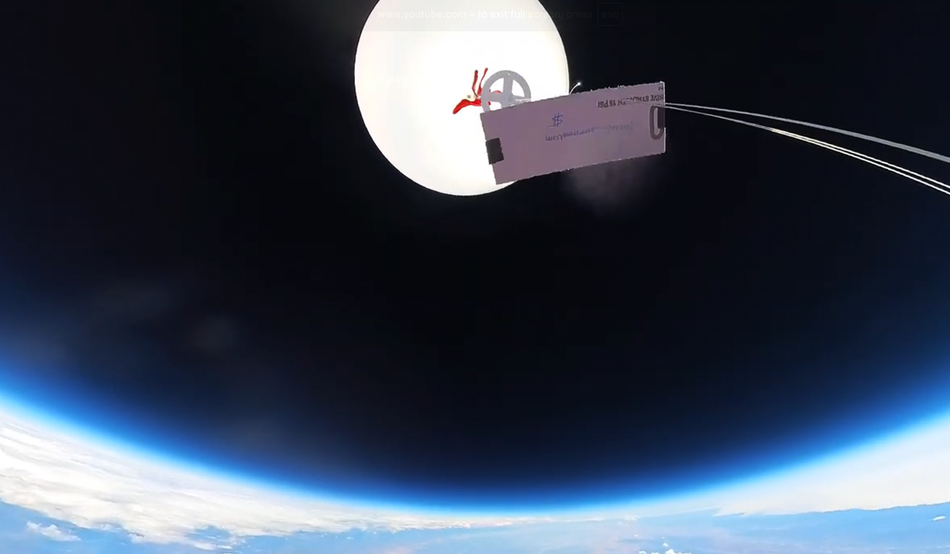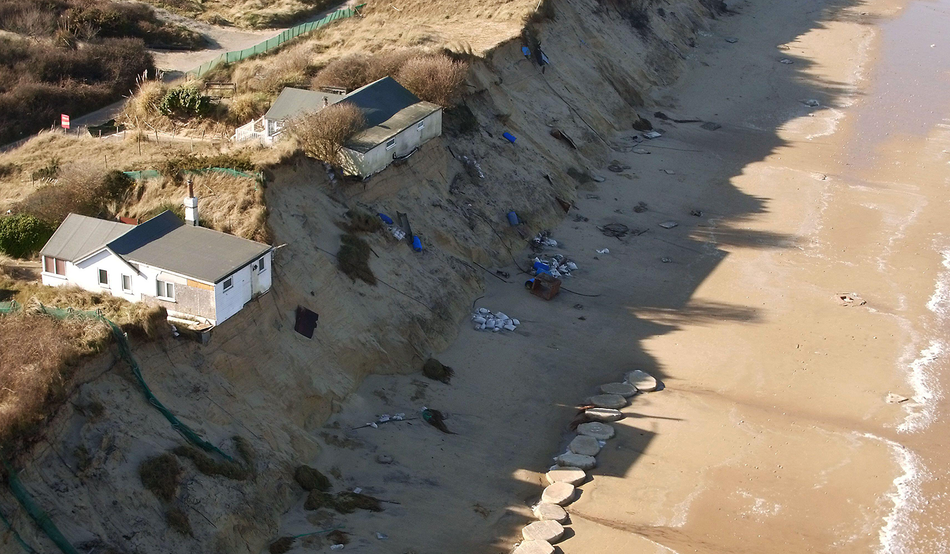Ricken Patel comes to geoengineering with a heavy heart. The former president and CEO of global activism network Avaaz was recently praised for his “enormous contribution to the Paris Agreement” by Christiana Figueres, who led the Paris negotiations. Neither the Patel nor Figueres of 2015 would have contemplated geoengineering—manipulating the environment by artificially altering the Earth’s atmosphere to reflect sunlight away, thus triggering global cooling. But since then, they agreed on Figueres’ Outrage + Optimism podcast that they have both “been on a journey”. And it has led them to believe that geoengineering (euphemistically rebranded by Ricken as “climate overshoot contingency planning”) now needs to be discussed.
What changed? The simple answer is: the climate. The rate of growth in global emissions has slowed since Paris, but emissions still increased by 1.17 per cent between 2015 and 2024. To meet the agreement’s goals to limit warming to 1.5°C above pre-industrial levels, they need to fall by 42 per cent by 2030, compared to 2019. That deadline is now just five years away.
No one thinks the goal will be met. The Paris 1.5°C target is toast. The only way to reduce even greater warming is to cut emissions—but in the short term, some are starting to panic about the pace of change. “We need to buy us some time”, argues Patel. Or as Figueres’ podcast co-host Ben Weaver-Hincks put it, “We all hoped that we would be able to get here through mitigation of emissions. And it’s increasingly becoming apparent that that is not enough.”
The cli-fi novel The Ministry for the Future by Kim Stanley Robinson opens with an entirely plausible premise. As the climate warms, a summer heatwave hits the Indian subcontinent and does not dissipate. Temperatures surpass the wet-bulb readings beyond which humans can survive. Millions die. India therefore decides to unilaterally launch high-altitude planes to spray sulphur dioxide into the upper atmosphere (a geoengineering method known as Stratospheric Aerosol Injection), justifying it as an act of self-defence after global inaction on emissions reduction. After months of these manned missions, global temperatures drop by around one degree—as they did when Mount Pinatubo in the Philippines erupted in June 1991, naturally spewing vast amounts of white ash and sulphates into the stratosphere.
Scientists have long known about this potential catalyst for cooling, and the techniques to recreate it artificially. But geoengineering, of which solar radiation management (SRM) is one method, has always been too controversial to contemplate, or even to study. Until now, it seems.
In April 2022, in the Baja California region of Mexico, an American named Luke Iseman released a six-foot helium balloon he had bought on Amazon and filled with sulphur (SO2) particles. His intention was that the balloon would reach the upper atmosphere where it would burst, releasing the particles. A budding entrepreneur, his company Make Sunsets planned to sell each release as a “cooling credit” at $10 a pop for a gram of SO2. Somewhat incredibly, this rogue action wasn’t illegal, and instead of being punished, he attracted $750,000 in venture capital investment. And he had precedent. In 2012, another American businessman, Russ George, dumped 100 tons of iron sulphate from a rented fishing boat into the sea off the coast of Canada, hoping to create an algal bloom that would absorb carbon dioxide (CO2). And only this month, an Israeli-US startup called Stardust Solutions was reported to have raised $60m, mostly from Silicon Valley investors, to begin “controlled outdoor experiments” for Stratospheric Aerosol Injection as soon as next April. Such cases, say the Washington Post, invoke “the worst fears of researchers who have struggled for decades to establish ground rules for solar geoengineering.”
David Keith, formerly of Harvard, and now professor of geophysical sciences at the University of Chicago, is one of those researchers. He has advocated for years for the scientific study of geoengineering, but has to date, unlike Iseman, never been allowed to release a single gram of particles skywards. He came close during the Stratospheric Controlled Perturbation Experiment, which planned to release calcium carbonate, a common mineral dust, from a launch site in Sweden. (Keith ruled out sulphate due to its potential for ozone destruction and stratospheric heating.) But after several attempted take-offs were aborted due to protests, the decade-long project was cancelled in 2024. Keith has consistently said that it would be far better to allow serious research scientists bound by codes of ethics to undertake such research, rather than rogue entrepreneurs—or worse, rogue states. As he told the Climate Now podcast in November 2023, any deployment of geoengineering should depend “on what [the] research reveals.” But his point is that currently there is no research—and so we know very little.
This is Ricken Patel’s thinking, too. He has been on a “learning tour” with his nonprofit Climate Hub since January this year, talking to global policymakers and scientists about “where they’re at” on geoengineering. The climate change movement has always asked people to listen to the science, he says—and this should be no different. “What we urgently need is a culture of healthy deliberation about the risks and about how we mitigate those risks”, he tells me, “and have it be evidence-based and science-led. That’s my goal.”
Patel rightly argues that we have geoengineered our planet for a very long time. The ongoing industrial release of fossil fuel emissions into the air is geoengineering. Our vast farmed and de-forested landscapes, and mega-dams flooding natural valleys, changing the albedo effect—the reflectivity of the Earth’s land mass—is geoengineering. The daily vapour trails from aeroplanes and shipping is too. Many states already undertake cloud seeding, to induce rain. A small, underfunded band of scientists who want to study geoengineering are asking to do something similar, at a vastly reduced scale, to research how, if at all, it can be done beneficially.
Advocates of one geoengineering method known as marine cloud brightening aim to replicate shipping trails by spraying salt water skyward to create more and brighter clouds over the sea. Some point out the irony that as global shipping has removed sulphur from its fuel mix (it’s harmful to humans), the brightness of shipping plumes has reduced, contributing to recent global warming. Marine cloud brightening has already been done to help protect the Great Barrier reef in Australia. Unlike SRM, it is much more short-term and localised, making it ideal for coral protection and, some scientists argue, slowing the speed of hurricanes; with coral reefs reaching a climate tipping point and scientists beginning to discuss the need for a Category 6 hurricanes classification, both of these are surely worth exploring. Yet a similar experiment begun by the University of Washington in the San Francisco Bay Area in April 2024 was cancelled by Alameda city council following locals’ concerns.
Patel stresses that such options need to be better understood because “even 1.5 degrees is looking to be more dangerous than we thought”—as is the “overshoot territory” of an even warmer world. Tipping point events—such as the failure of the Atlantic Meridional Overturning Circulation that keeps western Europe warm, the collapse of Thwaites Glacier, which would singularly raise global sea levels, and the mass death of ocean reefs—are now openly discussed as very real possibilities. “So, I’ve been going around asking, what’s the plan?” Plan A, he insists, must be rapid mitigation: reducing emissions as fast as possible. But if all the projections show that Plan A isn’t working fast enough, what then?
Despite the urgency of emissions reductions, the potential harms of geoengineering should not be understated. Writing in the New York Times in 2023, Professor Chukwumerije Okereke, director of the Center for Climate Change and Development in Nigeria, argued that SRM research would gamble millions of African lives in the interests of the Global North. Geoengineering technologies “run the danger of upsetting local and regional weather patterns—intensifying drought or flooding, for example, or disrupting monsoon cycles,” he wrote. “Without using the whole Earth as a laboratory, it’s impossible to know whether it would dim anything, let alone how it would affect ecosystems, people and the global climate,” he added. And even if it did, by some miracle, work well enough to cool the Earth in a uniform manner, it would then “need to be deployed essentially forever”—or risk a “termination shock”, when the warming effect of CO2 collected in the atmosphere would be released all at once. While it is possible to imagine countries wanting to initiate his process, it is difficult to imagine how they would then stop.
Åsa Larsson Blind, vice-president of the Saami Council, who was instrumental in halting David Keith’s experiment in Sweden, is among those who have put forward the argument that geoengineering is, in short, an expensive distraction from effective climate action; another get-out-of-jail free card for the polluters and oil and gas companies. She argued that the project was “very clearly a part of developing this technology of solar geoengineering, and that idea is something that goes against what we believe… we should be doing when it comes to combating climate change.”
Others fear that any kind of outdoor testing will give geoengineering a sheen of legitimacy, creating a “slippery slope” that makes it more widely accepted. In 2021, hundreds of academics and scientists around the world (including Professor Okereke) signed a statement calling on governments, the United Nations and others to establish an international non-use agreement on solar geoengineering. They asked for action “to prevent the normalization of solar geoengineering as a climate policy option” including a full ban on funding, deployment and study. The science is unknowable, their statement says, and the international governance untenable. Would it not then be better to collectively agree not to do the thing at all, much like the 1987 Montreal Protocol ban on the use of almost 100 ozone-destroying man-made chemicals?
The UK, however, is going ahead anyway. When Dominic Cummings (remember him?) was chief adviser to Boris Johnson, he pushed for the creation of the Advanced Research and Invention Agency (Aria), modelled on the US Defense Advanced Research Projects Agency (Darpa) as a low-bureaucracy model for funding high-risk research projects. Aria was to be run by visionary “weirdos and misfits”, not civil servants, and is not subject to freedom of information (FOI) requests. Among the projects it is currently backing are ones on improving robot dexterity and creating safeguards for AI. Keir Starmer’s Labour government increased Aria’s funding from £800m to £1bn.
In May 2025, Aria announced funding for “climate cooling” projects, too: £56.8m to support solar geoengineering research, including multiple outdoor field experiments (very few of which have ever been allowed, globally). One is focused on thickening sea ice in the Arctic, three are related to cloud brightening, and one evaluating potential particles for Stratospheric Aerosol Injection. The UK Government became, in the words of Pete Irvine, a research assistant professor under David Keith at the University of Chicago, “the largest single funder of solar geoengineering to date”.
Writing in the Guardian, two prominent climate scientists and signatories to the call for a solar geoengineering non-use agreement, Michael Mann and Raymond Pierrehumbert, have criticised Aria’s plans as “barking mad”. “We never imagined that the UK government itself would be leading the charge into what is almost universally recognized as the most dangerous and destabilizing sort of research: field trials that risk developing dangerous technology and paving the way for deployment.” But it appears to be going ahead.
Also this year, the European Commission received a set of recommendations from its chief scientific advisers calling for an EU-wide moratorium on the use of solar radiation management. However, the devil was in the detail. One recommendation opened the door for “limited outdoor SRM research” while another allowed for public funding. The longstanding fear of the non-use agreement advocates has been that scientific study would be given such tacit approval. As Pierrehumbert and Mann write, “that the trials are described as ‘small scale’ is little comfort, because even small-scale trials risk developing the technology somebody else (think Musk, Trump or Putin) might use for a large-scale deployment.”
Other solutions are available. The UK is investing far more money in industrial carbon capture and storage (CCS) than geoengineering through Aria: £22bn compared to £56.8m. Like SRM, capturing carbon from the air and burying it in spent oil fields under the North Sea is a costly distraction from emissions reduction. The IPCC emissions reduction pathways already factor in CCS as necessary—but the impact of artificial CCS is unproven. In its Sixth Assessment Report the IPPC estimates that CCS could capture two to three gigatonnes of CO2 emissions a year by 2050. There is no such estimate for SRM because of a lack of data.
Restoring nature surely holds more promise in the long-term, and is far more beneficial to the biodiversity of our planet (and, therefore, us). Reforestation, restoration of wetlands, peatlands, grasslands, sea grass, rewilding and soil carbon all have a climate cooling effect. The UN Environment Programme indicates that such actions have a potential to cumulatively mitigate up to 18 gigatonnes of CO2 emissions every year by 2050, potentially accounting for up to 30 per cent of the mitigation needed to keep the world within 1.5°C to 2°C of warming.
Nature-based solutions is “also something that I'm pushing on”, Ricken tells me. “I just haven’t found anyone yet that [answers] how we address the near-term risk. All the stuff I’ve seen is multi decadal”.
The point of geoengineering, he suggests, is that we don’t have decades. Global emissions are stalling; China’s emissions appear to be coming down; the long-term trajectory suggests we will eventually reach net zero. But the speed at which we reach it is the difference between accepting global climate heating of 1.5°C or 2°C, or 3°C or 4°C. The speed is the issue; and currently humanity’s best efforts are far too slow.
There are no easy answers here beyond reducing emissions as fast as possible and supporting nature. Increased research into SRM clearly increases the risk that it is someday deployed; yet the opposite, stopping all research, does not remove that possibility—it merely makes it more likely it is deployed badly. Tomorrow, some billionaire could, in theory, send a rocket into the air and splurge SO2 particles in order to cool our planet, triggering a wave of global weather changes, with huge implications for humanity. And yet, currently, most of us haven’t heard of geoengineering. Everyone has a right to know about it—and to form their own opinions.
I ask Ricken his opinion: given his understandable fears of impending climate tipping points, would he deploy geoengineering tomorrow if he could? He responds with an unequivocal “no”, and I find myself relieved. We need “a body of people (not me!) that makes a call about whether this is wise… we need better science on this stuff,” he says. But, he adds, “I do think this is the next chapter in the story of the environmental movement.”













